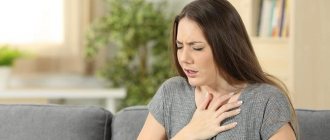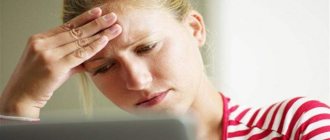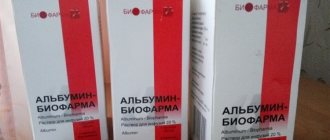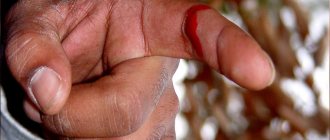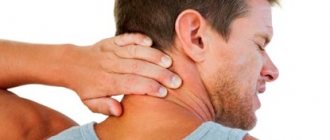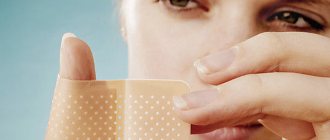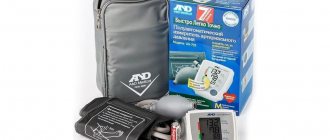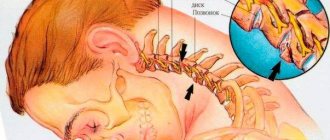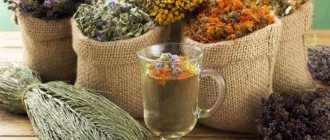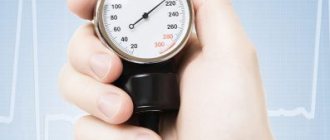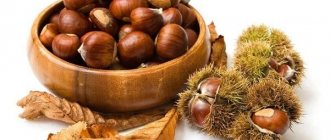What is it and what is the danger?
Pathology is divided into several types, each of which requires examination by a doctor. The most dangerous disorder is the flickering appearance. It is accompanied by interruptions in the functioning of the heart, shortness of breath, and painful sensations in the chest.
The danger is that blood stagnation occurs. This leads to the formation of blood clots, which disrupt the normalization of blood flow.
The greatest danger lies in the breaking off of a blood clot and its entry into the brain. In this case, a stroke develops, large-scale brain damage.
The following heart rhythm disturbances are distinguished:
- Tachycardia. At rest, the myocardium contracts 100 beats per minute. Occurs with high body temperature, heart failure, diseases of the nervous system and thyroid gland, anemia. In addition, the heart rate increases and discomfort in the organ area increases.
- Bradycardia. Heart rate is less than 60 beats per minute. This appearance may be a sign of neurocirculatory dystonia, heart attack, increased intracranial pressure, hypothyroidism. It can also appear due to viral infections or as a result of taking certain medications.
- Extrasystole. The main reason is myocardial diseases, ischemic disease, pathological processes of the gastrointestinal tract.
- Flickering. Contraction frequency – 150 beats per minute. Usually occurs with congenital pathologies of the myocardium, lung disease, dysfunction of the thyroid gland, and viral infections. It can sometimes occur after taking diuretics or drinking too much alcohol.
In most cases, manifestations are not life-threatening. But you need to know how to relieve an attack of arrhythmia yourself.
Providing emergency care during an attack of atrial fibrillation
If a person experiences an attack of atrial fibrillation, which is accompanied by a sharp tachycardia, moderately severe hemodynamic disturbances and poor tolerance by the patient according to subjective sensations, it is necessary to provide emergency care, which consists of stopping the attack by administering medications intravenously. As medications, ajmaline (gilurhythmal), administered intravenously slowly in a dosage of up to 100 mg, and novocainamide, used similarly in a dosage of up to 1 g, can be used. Sometimes an attack can be stopped by administering intravenously a stream of rhythmylene in a dosage of 100-150 mg.
If there are pronounced hemodynamic disturbances, in particular pulmonary edema, a sharp decrease in blood pressure, it is risky to use these drugs due to the danger that these phenomena will worsen. Then the urgent use of electrical pulse therapy may be justified, but treatment that is aimed at achieving a slower ventricular rate can also be used, in particular, digoxin can be administered intravenously at a dosage of 0.5 mg as a bolus. To make the ventricular rhythm more rare, verapamil (finoptin, isoptin) can also be used in a dosage of 5-10 mg intravenously. But it should be borne in mind that this drug is contraindicated in the presence of arterial hypotension. As a rule, a decrease in tachycardia accompanies an improvement in the patient's condition.
It is inappropriate to attempt to relieve protracted paroxysms of atrial fibrillation that last several days at the prehospital stage. In this case, the patient must be hospitalized.
Often, attacks of atrial fibrillation with a low ventricular rate do not require the use of active tactics, and they can be stopped by taking medications orally, in particular propranolol at a dosage of 20-40 mg and/or quinidine at a dosage of 0.2-0.4 g .
Paroxysms of atrial fibrillation in patients who have premature ventricular excitation syndromes have characteristic features of the course and require emergency treatment. In the case of a significant increase in ventricular rhythm, when the contraction frequency is more than 200 per minute, urgent electrical pulse therapy is provided, since this arrhythmia can transform into ventricular fibrillation. Among the medications, the use of cordarone, ajmaline, rhythmilene, novocainamide, lidocaine is provided intravenously in the dosages indicated above. The use of cardiac glycosides and verapamil is contraindicated due to the risk that the ventricular rate will increase.
In addition to the above medications, many other medications and methods of treating the patient can be used, the choice of which depends on the specific manifestation of the attack of atrial fibrillation.
Why does it occur
The main reasons for the development of heart rhythm disturbances:
- ischemia;
- myocardial infarction;
- heart failure;
- congenital or acquired pathologies;
- vegetative-vascular dystonia;
- bronchitis, pneumonia;
- bronchial asthma;
- diabetes;
- excessive consumption of alcohol, drugs, smoking;
- anemia;
- thyroid diseases;
- uncontrolled use of certain medications - diuretics, antiarrhythmics.
Only a doctor can determine the etiology of such manifestations after a full examination.
How is it diagnosed?
The main diagnostic method is an ECG. A special monitor will help you control the rhythm for a long time. With its help, you can record ECG for several days. During this time, the patient can lead a normal life.
In some cases, a more detailed study using EPI may be necessary. At the moment, this is the most reliable method of diagnosis and control. After the results are obtained, the doctor may prescribe medication for arrhythmia.
Traditional medicine recipes
How to relieve arrhythmia at home? For this, the following traditional medicine recipes will be useful, thanks to which you can quickly get rid of unpleasant symptoms, stabilize the heart rate and increase the level of the body’s natural defenses:
- Freshly squeezed juice from radish, carrots and beets, mixed in equal proportions, is taken daily in the first half of the day. Regular use of this drug significantly improves the general condition of all types of arrhythmia.
- Lemon zest with figs helps reduce heart rate.
- A decoction of the dried parts of peppermint is a very universal recipe that saves you from various forms of tachycardia. You need to drink it every day for a long time shortly before your first meal.
The following have good therapeutic properties: blood-red hawthorn, motherwort, beet juice with honey, calendula, lemon balm, valerian, hop cones, wild rosemary, foxglove, cornflower flowers and asparagus. For adults and children suffering from arrhythmia, it will be very useful to diversify your diet with foods rich in magnesium and potassium (bananas, buckwheat, oatmeal, dried fruits, new potatoes and nuts). It is best to eat food by dividing it into small portions. Otherwise, a full stomach causes irritation of the vagus nerve, which puts pressure directly on the sinus node.
Dangers if left untreated
Seizures do not pose a threat to human life. But there is always a risk of developing dangerous complications. One of them is the formation of blood clots.
In most cases they are localized in the left atrium. When a blood clot breaks off and travels into the bloodstream to the brain, it causes a stroke.
Blood circulation may be impaired not only in the heart, but also in other organs.
Symptoms of an attack
The general clinical picture of arrhythmia is vague, but certain types have specific symptoms. For example, tachycardia is recognized by sudden signs of anxiety and increased heart rate up to 150 beats. And extrasystole alternates heartbeat with complete freezing of the heart. Among the common symptoms during an attack of arrhythmia, patients complain of the following:
- feeling unwell and tired; makes you feel hot; blurred vision; dizziness occurs, which often results in fainting; anxiety, worry about your life; lack of air (mainly at night); pain, heaviness and discomfort in the chest.
Read also: The danger of cardiac arrhythmia
Return to contents
Symptoms of atrial fibrillation attack
Atrial fibrillation can hide for a long time - the younger the body, the longer the clinical picture does not appear. But when an attack occurs, emergency medical attention will be required. An imminent attack of atrial fibrillation is easy to recognize - thanks to characteristic features, including:
- severe weakness and tremors in the muscles; dyspnea; heavy sweating; excessive urination.
Return to contents
Therapy methods
If arrhythmia occurs, every person should know what to do at home. Rhythm disturbances can occur at any time, even in a healthy patient.
Basically, the causes of such failures are hidden in hypertension, chronic diseases, and self-treatment with medications. There are several methods of therapy.
Medicines
The main drugs for arrhythmia: diuretics, statins, cardiovascular drugs. They have a beneficial effect in the development of various emerging pathological processes.
But it is important to consider that the effect lasts only with long-term use.
Antiarrhythmic drugs include: Cordarone, Sotalex, Propanorm. They have a good effect on the heart muscle. Often prescribed for prevention.
It is important to remember that medications are taken only after a doctor’s prescription.
First aid
It is important to know how to eliminate heart arrhythmia at home. Useful procedures:
- Correct breathing. To do this, the patient must take a deep breath through his mouth. Then you need to hold your breath and strain. Stay in this state for up to 10 seconds. The air should be exhaled gradually, pursing your lips into a tube. It is recommended to carry out such procedures several times.
- Gentle pressure on the eyes. Using several fingers of each hand, apply gentle pressure on the eyes. Do this for a minute. You can carry out manipulations several times. Often such methods can stop attacks of tachycardia. It also helps reduce your heart rate.
- Massage. Every person has a carotid artery in the neck. Blood pressure can be monitored at this point. Massage movements are made with the thumb, gently pressing on the artery for 5 minutes. This should be done on both sides of the neck, in turn.
- Pulse check. If the dysfunction of the organ is associated with emotional tension, stress, then counting the pulse out loud will be useful. The person must take a sitting position. You need to close your eyes and feel the pulse on your left hand. Then you need to count your pulse loudly for 5 minutes.
- Self-hypnosis of calm. The person takes a position that is comfortable for him, closes his eyes and tries to relax as much as possible. You should place your right hand on the heart area and begin to speak soothing words. This must be done within 10 minutes. Gradually you can see your heart rate return to normal.
Traditional methods
It is useful to know what to take for arrhythmia at home. Especially if there are no medications. Effective means:
- Valerian and calendula. Each product will need 1 tbsp. l. The mixture must be poured with boiling water - 1 cup. It is necessary to insist for several hours, and then take throughout the day, dividing the entire amount. The course of therapy is 14 days, and then take a break for a week.
- Hawthorn. A decoction of this plant is recommended to be taken before meals. In addition to the decoction, take a tincture that helps strengthen the myocardium.
- Motherwort. It is recommended to drink the infusion before bed. If desired, you can add a small amount of honey.
- Tincture of elecampane. Half a glass of the roots of this plant is poured with vodka. They infuse for two weeks. After this time, you can take 1 tsp every day.
Manipulation
If a patient has been diagnosed with cardiac arrhythmia, treatment is carried out using modern methods. One of them is radiofrequency ablation.
The operation is performed by a surgeon using a special catheter equipped with an electrode. It allows you to get a drawing in 3D format. The computer highlights areas that have been affected.
The patient himself is under the influence of an electromagnetic field. Using a catheter, you can determine areas of pinpoint action. Then the affected area is determined.
This intervention is carried out without x-rays. The operation lasts a maximum of 3 hours. The patient is under local anesthesia. Since the catheter is passed through the femoral vein, recovery after surgery lasts no more than 2 days.
Treatment of arrhythmia
The fight against arrhythmia is not limited to taking medications. The treatment complex necessarily includes diet therapy and therapeutic exercises; traditional medicine methods are also a good help.
Drug therapy
The set of medications includes antiarrhythmic drugs of various groups according to the mechanism of action (flecainide, metaprolol, ibutilide, verapamil), cardiac glycosides, drugs containing potassium, a complex of vitamins (necessarily ascorbic and folic acid, vitamin E).
It is unacceptable to purchase and take antiarrhythmic drugs at a pharmacy without examination by a doctor and his prescriptions. An exception may be tincture of valerian, motherwort, valocordin and its analogues.
The treatment program for each patient is selected individually, as well as the dose of drugs. They should be prescribed by a cardiologist or arrhythmologist according to a scheme with periodic ECG monitoring.
Breathing exercises
Exercise therapy is a good help in the treatment and prevention of arrhythmia attacks. There are various methods of breathing exercises in their pure form, and their combination with physical exercises. The most popular complexes were Strelnikova and Buteyko.
Special inhalation-exhalation technologies have a reflex effect on the cardiac nerves and help cope with rhythm disturbances.
Strelnikova’s gymnastics technique is presented in the video:
Proper nutrition
Without following a certain diet, even drug treatment may not give the expected effect. It is necessary to exclude from the diet foods that are harmful to the heart: fatty meat, confectionery, chocolate, hot seasonings, sauces, marinades, pickles, smoked foods, strong tea and coffee, alcohol, and limit salt intake to a minimum.
The diet is very important: at certain hours, in small portions 4-6 times a day.
To help your heart, your daily menu should include:
- Fresh vegetables and fruits,
- Berries;
- Greenery;
- Nuts;
- Honey;
- Dried fruits.
Especially healthy fruits for the heart are apricots, bananas, melon, avocado, raspberries, grapes, grapefruit, lemons, and vegetables - pumpkin, sweet peppers, carrots, beets, tomatoes, cabbage.
Animal fats need to be replaced with vegetable oils - sunflower, olive, soybean, flaxseed, wheat germ.
It is better to meet protein needs with easily digestible lean poultry, low-fat dairy products, unsalted cheeses, fish, and legumes.
Traditional methods
At home, folk remedies can also help with arrhythmia. Traditional medicine offers the following recipes to help with cardiac arrhythmia and strengthen the heart:
- Rosehip decoction - 3 tablespoons of berries, brew 1 liter of boiling water in a thermos, leave for 1-2 hours, strain, take half a glass 3-4 times after meals;
- Honey with lemon – grind 4 whole lemons in a meat grinder, mix with 1 liter of honey, take 1 tablespoon in the morning and evening before meals;
- Viburnum decoction - 1 glass of berries per 1 liter of water, bring to a boil, leave on low heat for 10 minutes, take half a glass 2-3 times a day, preferably with honey.
The following are very popular in the provision of assistance and treatment of arrhythmia:
- Valerian root;
- Motherwort;
- Peppermint;
- Parsley leaf and root;
- Parsnip leaf and root;
- Celery leaf and root.
Before choosing a folk medicine, you need to consult a doctor.
Contraindications for use
Main contraindications to the use of drugs:
- interaction with atrioventricular block;
- individual intolerance or hypersensitivity to the components of the drug;
- combination with anticoagulants and other antiarrhythmic drugs is not recommended;
- bronchial asthma;
- renal and liver failure;
- atherosclerosis;
- suffering a heart attack;
- period of pregnancy and lactation;
- age up to 18 years.
Prevention
Simple rules of prevention will help to significantly reduce the risk of developing the disease. These recommendations include:
- active, healthy lifestyle;
- proper and balanced nutrition;
- frequent walks in the fresh air;
- avoid excessive stress, especially physical exercise;
- to refuse from bad habits.
The most important thing is to consult a doctor in a timely manner. When the first signs of an abnormal heart rhythm develop, you should visit a physician or cardiologist.
First aid at home
Before the ambulance arrives, you must complete the following algorithm of actions.
- The patient should calm down and refuse to perform any physical activities. It is advisable to lie down on a bed or sofa; if this is not possible, then sit on a chair.
- You must try to even out your breathing. It is very difficult to do this during an attack, but it is calm and even breathing that helps the patient avoid the most unpleasant complications.
- In the room where the patient is located, open a window or vent to ensure a flow of fresh air. If a person is outdoors, then protect him from bright sunlight.
- Unbutton the shirt collar, remove the scarf, tight clothing, and make sure that no pressure is applied to the chest and neck area.
- Use vagal tests to normalize the pathological condition - holding your breath for a short time, lightly massaging the eyeballs, massaging the temples.
- Wipe the patient's face with a towel soaked in cool water. You can rinse your face with cool water and give the person a drink.
- To stop an attack of arrhythmia, take sedatives - tablets of Valerian, Motherwort, Corvalol.
The patient is not recommended to remain alone until the ambulance arrives. Panic and fear for one's own life can lead to worsening clinical manifestations.
Important! It is strictly prohibited to take alcoholic beverages as a sedative. During an attack, you should not drink carbonated water, tea or coffee, as well as cocoa and dairy drinks.
